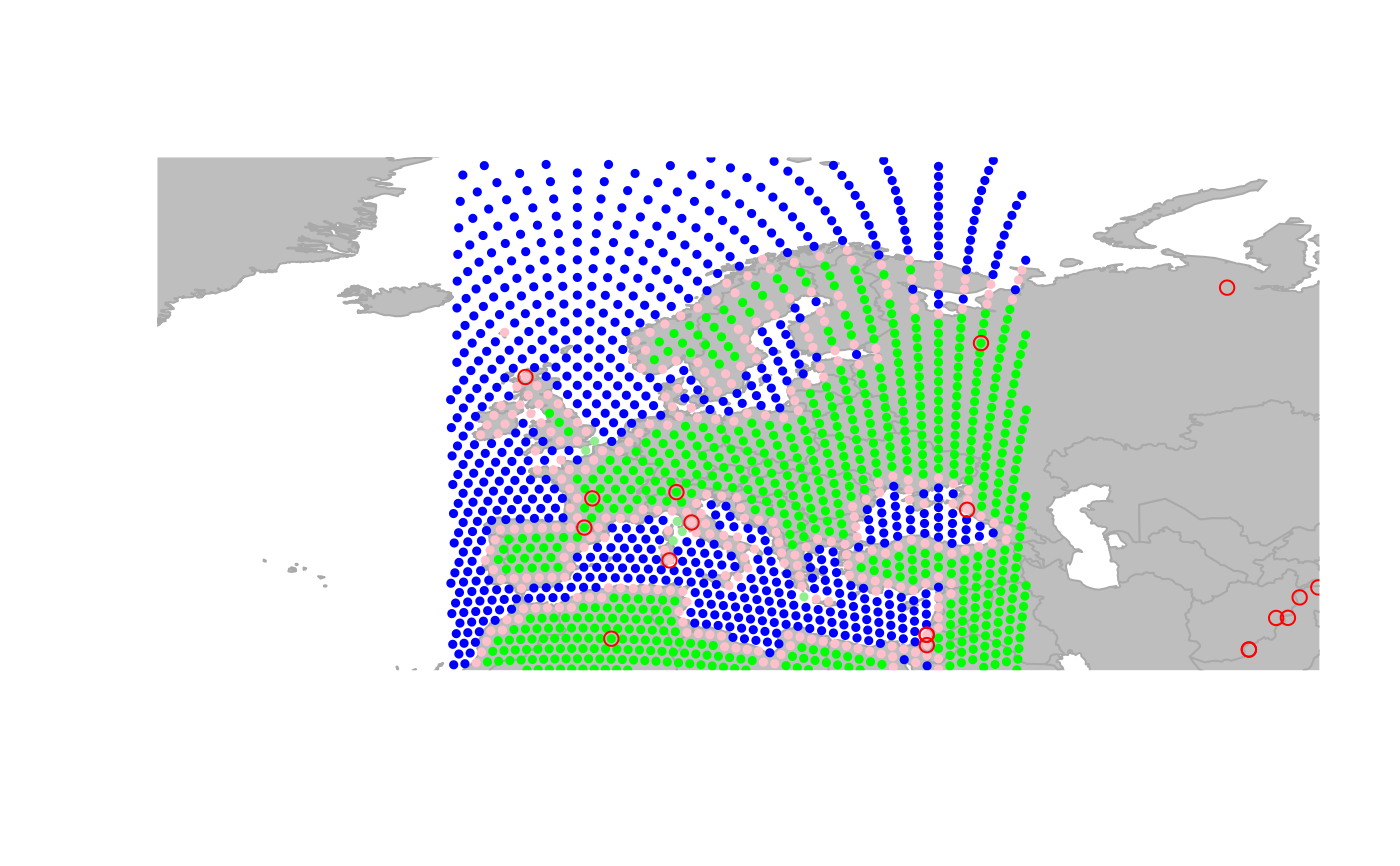The datasets hgdp and hgdpPlus provides genetic diversity
several human populations worldwide. Both datasets are gData
objects, interfaced with the gGraph object
worldgraph.40k.
Format
hgdp is a gGraph object with the following
data: %
- @nodes.attr$habitat
habitat corresponding to each % vertice; currently 'land' or 'sea'.
% - @meta$color
a matrix assigning a color for plotting % vertices (second column) to different values of habitat (first % column).
%
Details
hgdp describes 52 populations from the original Human Genome
Diversity Panel.
hgdpPlus describes hgdp populations plus 24 native American
populations.
Examples
## check object
hgdp
#>
#> === gData object ===
#>
#> @coords: spatial coordinates of 52 nodes
#> lon lat
#> 1 -3 59
#> 2 39 44
#> 3 40 61
#> ...
#>
#> @nodes.id: nodes identifiers
#> 28179 11012 22532
#> "26898" "11652" "22532"
#> ...
#>
#> @data: 52 data
#> Population Region Label n Latitude Longitude Genetic.Div
#> 1 Orcadian EUROPE 1 15 59 -3 0.7258820
#> 2 Adygei EUROPE 2 17 44 39 0.7297802
#> 3 Russian EUROPE 3 25 61 40 0.7319749
#> ...
#>
#> Associated gGraph: worldgraph.40k
## plotting the object
plot(hgdp)
 ## results from Handley et al.
if (FALSE) { # \dontrun{
## Addis Ababa
addis <- list(lon = 38.74, lat = 9.03)
addis <- closestNode(worldgraph.40k, addis) # this takes a while
## shortest path from Addis Ababa
myPath <- dijkstraFrom(hgdp, addis)
## plot results
plot(worldgraph.40k, col = 0)
points(hgdp)
points(worldgraph.40k[addis], psize = 3, pch = "x", col = "black")
plot(myPath)
## correlations distance/genetic div.
geo.dist <- sapply(myPath[-length(myPath)], function(e) e$length)
gen.div <- getData(hgdp)[, "Genetic.Div"]
plot(gen.div ~ geo.dist)
lm1 <- lm(gen.div ~ geo.dist)
abline(lm1, col = "blue") # this regression is wrong
summary(lm1)
} # }
## results from Handley et al.
if (FALSE) { # \dontrun{
## Addis Ababa
addis <- list(lon = 38.74, lat = 9.03)
addis <- closestNode(worldgraph.40k, addis) # this takes a while
## shortest path from Addis Ababa
myPath <- dijkstraFrom(hgdp, addis)
## plot results
plot(worldgraph.40k, col = 0)
points(hgdp)
points(worldgraph.40k[addis], psize = 3, pch = "x", col = "black")
plot(myPath)
## correlations distance/genetic div.
geo.dist <- sapply(myPath[-length(myPath)], function(e) e$length)
gen.div <- getData(hgdp)[, "Genetic.Div"]
plot(gen.div ~ geo.dist)
lm1 <- lm(gen.div ~ geo.dist)
abline(lm1, col = "blue") # this regression is wrong
summary(lm1)
} # }